-
 Bitcoin
Bitcoin $107,341.7259
0.15% -
 Ethereum
Ethereum $2,438.6204
0.70% -
 Tether USDt
Tether USDt $1.0003
-0.02% -
 XRP
XRP $2.1866
1.94% -
 BNB
BNB $649.0952
0.36% -
 Solana
Solana $150.9602
5.63% -
 USDC
USDC $0.9999
0.00% -
 TRON
TRON $0.2742
0.40% -
 Dogecoin
Dogecoin $0.1645
1.93% -
 Cardano
Cardano $0.5669
1.18% -
 Hyperliquid
Hyperliquid $37.8286
4.19% -
 Bitcoin Cash
Bitcoin Cash $491.4669
-2.74% -
 Sui
Sui $2.8150
3.06% -
 Chainlink
Chainlink $13.4184
2.91% -
 UNUS SED LEO
UNUS SED LEO $9.0809
0.27% -
 Avalanche
Avalanche $18.0295
2.60% -
 Stellar
Stellar $0.2396
1.19% -
 Toncoin
Toncoin $2.8587
0.13% -
 Shiba Inu
Shiba Inu $0.0...01160
2.59% -
 Litecoin
Litecoin $86.4192
1.45% -
 Hedera
Hedera $0.1486
1.19% -
 Monero
Monero $308.4324
0.87% -
 Polkadot
Polkadot $3.4202
1.43% -
 Bitget Token
Bitget Token $4.6436
-0.34% -
 Dai
Dai $0.9998
-0.02% -
 Ethena USDe
Ethena USDe $1.0002
0.00% -
 Uniswap
Uniswap $7.1527
3.29% -
 Pi
Pi $0.5357
-8.45% -
 Pepe
Pepe $0.0...09588
4.61% -
 Aave
Aave $259.9759
0.81%
Crypto Derivatives Jargon: Professional Vocabulary from Perpetual Contracts to Options
Crypto derivatives like perpetual contracts, futures, and options allow traders to leverage positions, hedge volatility, and speculate without owning assets.
May 09, 2025 at 07:42 pm
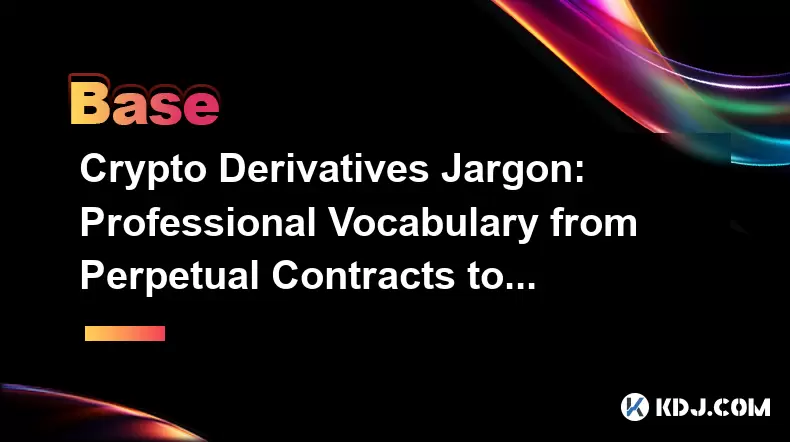
In the bustling world of cryptocurrency, derivatives have become a crucial tool for traders looking to leverage their positions, hedge against volatility, and speculate on price movements without owning the underlying assets. To navigate this complex market, it's essential to understand the professional vocabulary associated with crypto derivatives, from perpetual contracts to options. This article will delve into the key terms and concepts that every trader should know.
Understanding Perpetual Contracts
Perpetual contracts, also known as perpetual swaps or perpetual futures, are a type of futures contract with no expiration date. They allow traders to speculate on the price of a cryptocurrency without the need to settle the contract at a specific date. Instead, perpetual contracts use a funding rate mechanism to ensure that the contract price stays close to the spot price of the underlying asset.
Funding Rate: This is a periodic payment made between traders based on the difference between the perpetual contract's market price and the spot price of the underlying asset. If the contract price is higher than the spot price, long positions pay short positions. Conversely, if the contract price is lower, short positions pay long positions.
Mark Price: To prevent manipulation, exchanges use a mark price, which is a fair estimate of the asset's value based on a combination of the spot price and the funding rate. This helps prevent liquidations caused by sudden price movements.
Liquidation: If the market moves against a trader's position and the account's margin falls below the maintenance margin level, the position will be liquidated. Understanding liquidation levels is crucial for managing risk in perpetual contracts.
Exploring Futures Contracts
Futures contracts are agreements to buy or sell an asset at a predetermined price at a specific time in the future. Unlike perpetual contracts, futures have an expiration date, which adds a layer of complexity to trading strategies.
Expiration Date: This is the date on which the futures contract must be settled. Traders need to be aware of the expiration date to avoid unexpected outcomes.
Settlement: Futures contracts can be settled in two ways: physically or financially. Physical settlement involves the delivery of the underlying asset, while financial settlement involves a cash payment based on the difference between the contract price and the spot price at expiration.
Basis: The difference between the futures price and the spot price is known as the basis. Traders often monitor the basis to gauge market sentiment and potential arbitrage opportunities.
Diving into Options
Options are financial derivatives that give the buyer the right, but not the obligation, to buy (call option) or sell (put option) an underlying asset at a specified price (strike price) before or at the expiration date.
Call Option: This gives the buyer the right to purchase the underlying asset at the strike price. Traders buy call options when they anticipate the price of the asset will rise.
Put Option: This gives the buyer the right to sell the underlying asset at the strike price. Traders buy put options when they anticipate the price of the asset will fall.
Strike Price: The price at which the option can be exercised. It's crucial for traders to select an appropriate strike price based on their market outlook.
Expiration Date: Similar to futures, options have an expiration date. However, options can be exercised at any time before expiration (American-style) or only at expiration (European-style).
Premium: The price paid for the option. It's influenced by factors such as the underlying asset's volatility, time until expiration, and the difference between the strike price and the current market price.
Understanding Greeks in Options Trading
Greeks are mathematical measures used to assess the sensitivity of an option's price to various factors. They are essential for options traders to manage risk and optimize their strategies.
Delta: Measures the rate of change of the option's price with respect to the underlying asset's price. A delta of 0.5 means the option's price will move approximately half as much as the underlying asset.
Gamma: Measures the rate of change of delta with respect to the underlying asset's price. It helps traders understand how delta will change as the market moves.
Theta: Measures the rate of change of the option's price with respect to time. It represents the time decay of the option, which is crucial for short-term trading strategies.
Vega: Measures the rate of change of the option's price with respect to the underlying asset's volatility. Traders use vega to assess the impact of volatility changes on their options positions.
Rho: Measures the rate of change of the option's price with respect to interest rates. While less commonly used in crypto markets, it's still important for understanding the broader financial context.
Navigating Margin and Leverage
Margin and leverage are fundamental concepts in derivatives trading, allowing traders to amplify their exposure to the market while managing their capital efficiently.
Initial Margin: The amount of capital required to open a position. It acts as a deposit to cover potential losses.
Maintenance Margin: The minimum amount of equity that must be maintained in the account to keep the position open. If the account balance falls below this level, the position will be liquidated.
Leverage: The ratio of the trader's position size to the initial margin. Higher leverage allows traders to control larger positions with less capital but also increases the risk of liquidation.
Margin Call: A demand for additional funds to be deposited into the account when the account balance approaches the maintenance margin level. Traders need to respond to margin calls promptly to avoid liquidation.
Frequently Asked Questions
Q: How do I calculate the funding rate for a perpetual contract?
A: The funding rate is typically calculated as a percentage of the position size and is paid or received at regular intervals, such as every eight hours. The formula is usually provided by the exchange and involves the difference between the perpetual contract's mark price and the spot price of the underlying asset.
Q: What are the key differences between American-style and European-style options?
A: American-style options can be exercised at any time before or at expiration, providing more flexibility for traders. European-style options can only be exercised at expiration, which can affect the option's pricing and trading strategies.
Q: How does the basis impact futures trading strategies?
A: The basis can be used to identify potential arbitrage opportunities between the futures market and the spot market. A positive basis (futures price higher than spot price) may indicate bullish sentiment, while a negative basis (futures price lower than spot price) may indicate bearish sentiment. Traders can use this information to adjust their positions accordingly.
Q: What role do Greeks play in managing options positions?
A: Greeks provide valuable insights into how an option's price will change in response to various market factors. By understanding and monitoring delta, gamma, theta, vega, and rho, traders can make more informed decisions about when to enter, exit, or adjust their options positions to manage risk effectively.
Disclaimer:info@kdj.com
The information provided is not trading advice. kdj.com does not assume any responsibility for any investments made based on the information provided in this article. Cryptocurrencies are highly volatile and it is highly recommended that you invest with caution after thorough research!
If you believe that the content used on this website infringes your copyright, please contact us immediately (info@kdj.com) and we will delete it promptly.
- Kitten Craze Online: Hunting for the Purr-fect Coin Purse
- 2025-06-29 10:30:12
- Pudgy Penguins Soar to 3-Month High Amidst PENGU ETF Buzz!
- 2025-06-29 10:30:12
- AI Agents, Token Role, and Capitalization: Navigating the Web3 Frontier
- 2025-06-29 10:50:11
- Avalanche Price Forecast: Grayscale Boost Signals Potential Rally to $50?
- 2025-06-29 10:50:11
- Khazan's Getting a Facelift: Balance Changes and Freebies Galore!
- 2025-06-29 11:10:12
- Wall Street's Crypto Rival Battle: Saylor vs. Chanos and the Meme Coin Mania
- 2025-06-29 11:10:12
Related knowledge
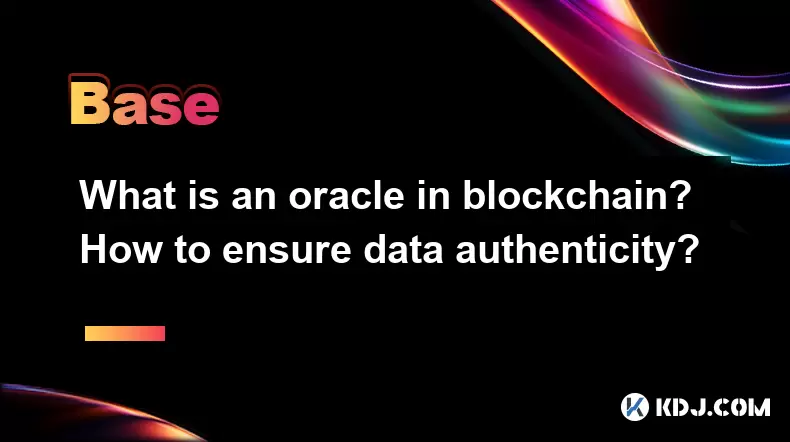
What is an oracle in blockchain? How to ensure data authenticity?
Jun 19,2025 at 08:49pm
Understanding the Role of an Oracle in BlockchainIn the context of blockchain technology, an oracle serves as a bridge between the blockchain and external data sources. While blockchains are inherently secure and decentralized, they cannot access real-world information on their own. Oracles enable smart contracts to interact with off-chain data such as ...
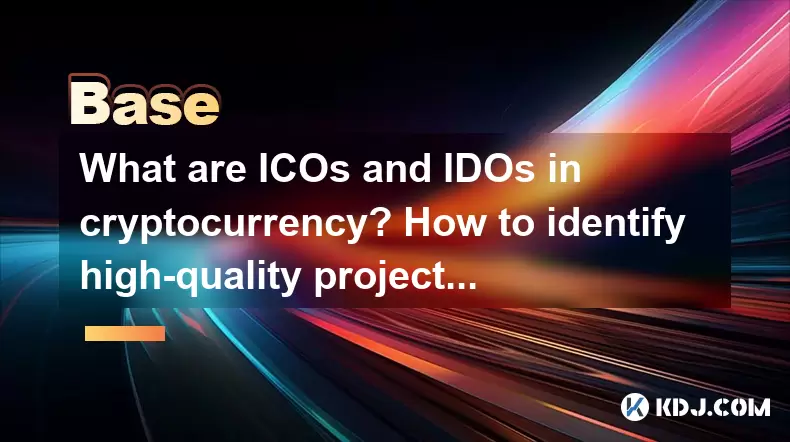
What are ICOs and IDOs in cryptocurrency? How to identify high-quality projects?
Jun 22,2025 at 11:49am
Understanding ICOs in CryptocurrencyInitial Coin Offerings (ICOs) are fundraising mechanisms used by cryptocurrency startups to raise capital for their projects. In an ICO, a company creates and sells its own tokens to investors in exchange for established cryptocurrencies like Bitcoin or Ethereum. The process typically involves the release of a whitepa...
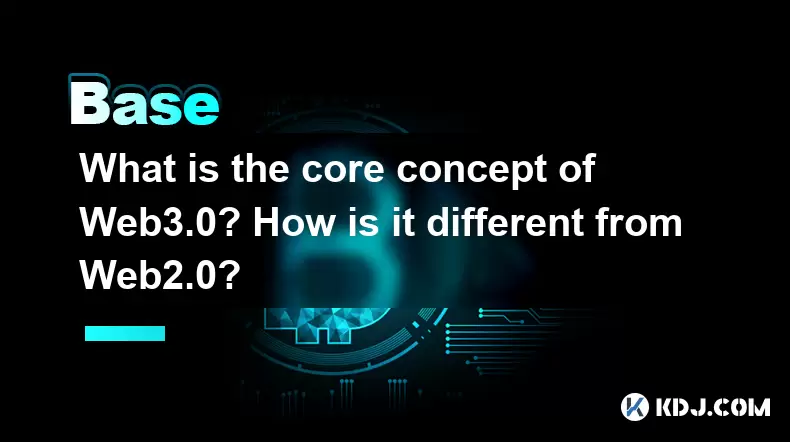
What is the core concept of Web3.0? How is it different from Web2.0?
Jun 21,2025 at 05:56pm
Decentralization as the Foundation of Web3.0The core concept of Web3.0 revolves around decentralization, which fundamentally challenges the centralized architecture of Web2.0. In Web3.0, control and ownership are distributed across a network rather than being held by a central authority or corporation. This is achieved primarily through blockchain techn...
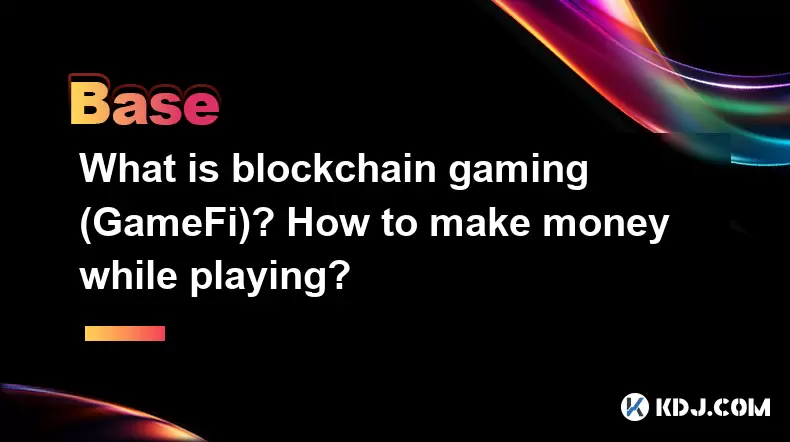
What is blockchain gaming (GameFi)? How to make money while playing?
Jun 20,2025 at 07:56am
Understanding Blockchain Gaming (GameFi)Blockchain gaming, often referred to as GameFi, is a fusion of blockchain technology and video games. It enables players to own in-game assets through non-fungible tokens (NFTs) and earn rewards via cryptocurrencies or token-based systems. Unlike traditional games where items are controlled by centralized develope...
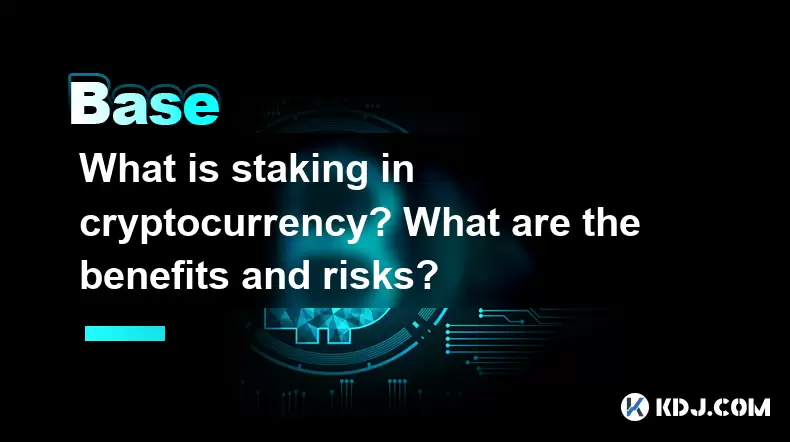
What is staking in cryptocurrency? What are the benefits and risks?
Jun 22,2025 at 10:01am
Understanding the Concept of Staking in CryptocurrencyStaking in cryptocurrency refers to the process of actively participating in transaction validation on a blockchain network that uses a Proof-of-Stake (PoS) consensus mechanism. Instead of miners competing to solve complex mathematical puzzles as in Proof-of-Work systems like Bitcoin, PoS blockchains...
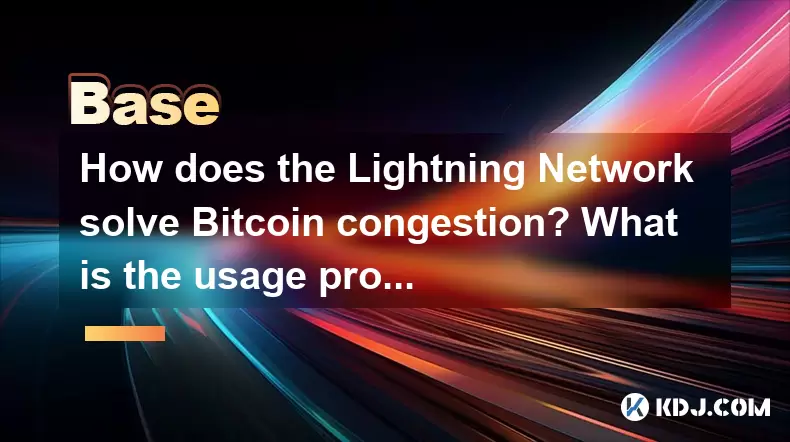
How does the Lightning Network solve Bitcoin congestion? What is the usage process?
Jun 23,2025 at 06:21pm
Understanding Bitcoin Network CongestionBitcoin, as a decentralized digital currency, operates on a blockchain that records every transaction in a public ledger. Each block has a limited size, typically 1 megabyte, which allows for only a certain number of transactions per second (TPS). When the number of transactions increases, the network becomes cong...

What is an oracle in blockchain? How to ensure data authenticity?
Jun 19,2025 at 08:49pm
Understanding the Role of an Oracle in BlockchainIn the context of blockchain technology, an oracle serves as a bridge between the blockchain and external data sources. While blockchains are inherently secure and decentralized, they cannot access real-world information on their own. Oracles enable smart contracts to interact with off-chain data such as ...

What are ICOs and IDOs in cryptocurrency? How to identify high-quality projects?
Jun 22,2025 at 11:49am
Understanding ICOs in CryptocurrencyInitial Coin Offerings (ICOs) are fundraising mechanisms used by cryptocurrency startups to raise capital for their projects. In an ICO, a company creates and sells its own tokens to investors in exchange for established cryptocurrencies like Bitcoin or Ethereum. The process typically involves the release of a whitepa...

What is the core concept of Web3.0? How is it different from Web2.0?
Jun 21,2025 at 05:56pm
Decentralization as the Foundation of Web3.0The core concept of Web3.0 revolves around decentralization, which fundamentally challenges the centralized architecture of Web2.0. In Web3.0, control and ownership are distributed across a network rather than being held by a central authority or corporation. This is achieved primarily through blockchain techn...

What is blockchain gaming (GameFi)? How to make money while playing?
Jun 20,2025 at 07:56am
Understanding Blockchain Gaming (GameFi)Blockchain gaming, often referred to as GameFi, is a fusion of blockchain technology and video games. It enables players to own in-game assets through non-fungible tokens (NFTs) and earn rewards via cryptocurrencies or token-based systems. Unlike traditional games where items are controlled by centralized develope...

What is staking in cryptocurrency? What are the benefits and risks?
Jun 22,2025 at 10:01am
Understanding the Concept of Staking in CryptocurrencyStaking in cryptocurrency refers to the process of actively participating in transaction validation on a blockchain network that uses a Proof-of-Stake (PoS) consensus mechanism. Instead of miners competing to solve complex mathematical puzzles as in Proof-of-Work systems like Bitcoin, PoS blockchains...

How does the Lightning Network solve Bitcoin congestion? What is the usage process?
Jun 23,2025 at 06:21pm
Understanding Bitcoin Network CongestionBitcoin, as a decentralized digital currency, operates on a blockchain that records every transaction in a public ledger. Each block has a limited size, typically 1 megabyte, which allows for only a certain number of transactions per second (TPS). When the number of transactions increases, the network becomes cong...
See all articles

























































































